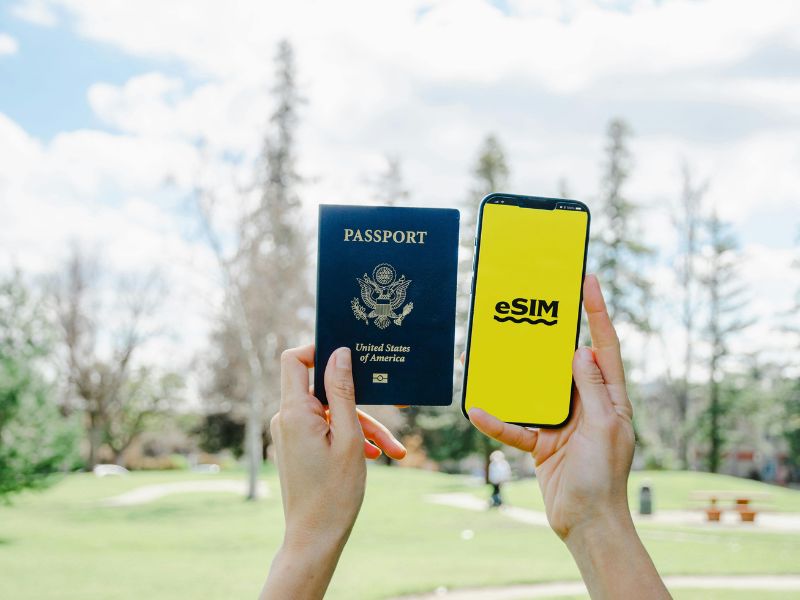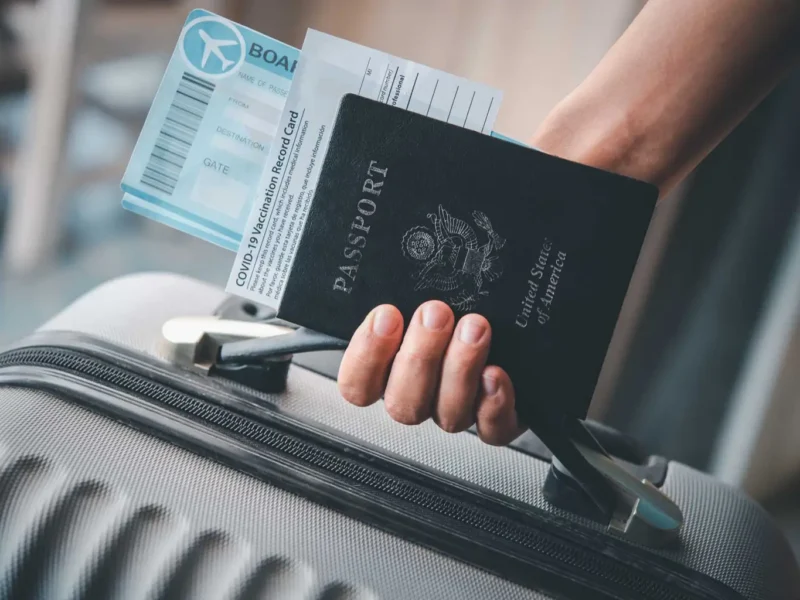The H-1B visa is one of the most sought-after work visas for skilled professionals looking to build a career in the United States. Designed for individuals in specialized fields such as technology, engineering, finance, healthcare, and academia, the H-1B visa allows foreign workers to be employed by U.S. companies for an initial period of up to three years, with the possibility of extension. However, the process of securing an H-1B visa can be complex, involving strict eligibility criteria, a competitive lottery system, and multiple legal and procedural requirements.
From comprehending the fundamentals and fulfilling qualifying requirements to navigating the lottery, submitting the required documentation, and overcoming typical obstacles, this thorough guide will take you through every step of H-1B sponsorship. This book offers the crucial information required to successfully get an H-1B visa in 2025 and beyond, regardless of whether you are an employer seeking to sponsor foreign talent or a potential applicant.
Understanding the H-1B Visa
The H-1B visa is a non-immigrant visa that allows U.S. employers to hire foreign workers in specialty occupations requiring specialized knowledge and a bachelor’s degree or higher in a specific field. This program addresses skill shortages in the U.S. labor market by enabling employers to access a global talent pool.
Eligibility Criteria
For Employers
U.S. employers seeking to sponsor an H-1B visa must ensure the following:
1. Specialty Occupation: The position must require theoretical and practical application of specialized knowledge and necessitate at least a bachelor’s degree or its equivalent in a specific field.
2. Labor Condition Application (LCA): Employers must file an LCA with the U.S. Department of Labor (DOL), attesting that:
- The H-1B worker will receive wages equal to or exceeding the prevailing wage for the position and location.
- The employment of the H-1B worker will not adversely affect the working conditions of U.S. workers.
- There is no ongoing strike or lockout in the occupational classification at the intended place of employment.
For Employees
Prospective H-1B employees must meet the following requirements:
1. Educational Qualifications: Possess at least a bachelor’s degree or its equivalent in a field directly related to the job.
2. Job Offer: Secure a legitimate job offer from a U.S. employer for a role that qualifies as a specialty occupation.
3. Licensure: If the occupation requires state or federal licensure (e.g., medical professionals, attorneys), the employee must obtain the necessary credentials before commencing employment.
The H-1B Sponsorship Process
The process of obtaining an H-1B visa involves several critical steps:
1. Employer Registration and H-1B Lottery
When the number of applications exceeds the annual maximum on H-1B visas (65,000 standard quotas + 20,000 for those with advanced degrees from U.S. universities), the U.S. Citizenship and Immigration Services (USCIS) uses a lottery mechanism. During a specified registration period, usually in March, employers are required to electronically register each potential H-1B applicant. There is a $10 registration fee for each applicant. Registrations are then chosen at random by USCIS to move on to the petition filing phase.
2. Filing the Labor Condition Application (LCA)
Following the selection of a candidate, the employer is required to submit an LCA (Form ETA 9035) to the DOL. According to the LCA, employers must:
- Certify adherence to wage and working condition requirements.
- Provide details about the job location, title, and salary.
- Notify current employees of the intent to hire an H-1B worker, either through physical posting at the workplace or electronic notification.
The DOL typically processes LCAs within seven business days.
3. Submitting the H-1B Petition
Following approval of the LCA, the employer submits the prospective employee’s Form I-129 (Petition for a Nonimmigrant Worker) to USCIS. The following must be included in the petition:
- The approved LCA.
- Evidence of the employee’s qualifications, such as educational transcripts and professional licenses.
- A detailed job description demonstrating that the position qualifies as a specialty occupation.
- Required fees (discussed in the next section).
USCIS may take several months to process the petition, though premium processing is available for expedited review.
4. Visa Stamping and Entry to the U.S.
If the petition is approved, the employee must apply for an H-1B visa at a U.S. embassy or consulate if they are not in the country. This includes:
- Completing the DS-160 Online Nonimmigrant Visa Application.
- Paying the applicable visa application fee.
- Attending a visa interview.
Once the visa is granted, the employee can enter the U.S. and commence employment on or after the start date indicated in the petition, typically October 1 of the fiscal year.
Costs Associated with H-1B Sponsorship
Sponsoring an H-1B visa entails several fees, primarily borne by the employer:
Basic Filing Fee: $460 for Form I-129.
American Competitiveness and Workforce Improvement Act (ACWIA) Fee: $750 for employers with 1-25 full-time employees; $1,500 for those with 26 or more employees.
Fraud Prevention and Detection Fee: $500.
Public Law 114-113 Fee: $4,000 for employers with over 50 employees, more than half of whom are on H-1B or L-1 visas.
Premium Processing Fee (optional): $2,500 for expedited processing within 15 calendar days.
Employers must also consider additional costs such as legal fees and expenses related to compliance and record-keeping.
Duration and Extensions
The initial duration of the H-1B visa is three years, although it may be extended to a maximum of six years. Extensions may be requested by employers in three-year increments. Under certain circumstances, some people may be eligible for extensions longer than six years, including:
- Pending Green Card Application: If the employee has an approved I-140 petition (immigrant petition for a green card), they may be eligible for additional one-year or three-year extensions beyond the six-year cap.
- H-1B Recapture Rule: Time spent outside the U.S. during the H-1B validity period can be “recaptured” and added to the total duration.
If an H-1B worker wishes to change employers, the new employer must file an H-1B transfer petition. The employee can begin working with the new employer as soon as USCIS receives the transfer petition, without waiting for final approval.
H-1B to Green Card: The Path to Permanent Residency
For long-term stays in the United States, many holders of H-1B visas apply for permanent residency, or a “green card.” The following steps are usually included in the process:
- PERM Labor Certification: The employer must demonstrate that no qualified U.S. workers are available for the position.
- I-140 Immigrant Petition: Once the labor certification is approved, the employer files an I-140 petition.
- Adjustment of Status (I-485) or Consular Processing: The employee applies for a green card either from within the U.S. or at a U.S. consulate abroad.
The wait time for a green card varies depending on the employee’s country of birth and the employment-based category under which they apply.
Common Challenges and Solutions
While the H-1B visa program offers an incredible opportunity for foreign professionals to work in the United States, the process can be complex and comes with several challenges for both employers and employees. Understanding these challenges and knowing how to address them can help make the sponsorship process smoother and more successful. Here are some of the most common challenges and their solutions:
1. H-1B Lottery Rejections
Challenge:
The H-1B visa program has an annual cap on the number of visas issued, and demand often exceeds supply. As a result, applicants are selected through a lottery system, which can mean that many qualified individuals are not chosen for visa processing.
Solution:
- Alternative Visa Options: If you are not selected for the H-1B lottery, consider other visa options such as the O-1 visa for individuals with extraordinary abilities or the L-1 visa for intra-company transfers.
- Cap-Exempt Employers: Certain employers, such as non-profit organizations, universities, and research institutions, are exempt from the H-1B cap. If you’re seeking work with such an organization, you may bypass the lottery.
- Strategic Timing and Multiple Applications: For individuals with strong skills in high-demand fields like tech, it is worth considering multiple strategies or exploring different employer options to improve your chances in future lotteries.
2. Request for Evidence (RFE)
Challenge:
USCIS may issue a Request for Evidence (RFE) if they need additional documentation to verify that the position qualifies as a specialty occupation or that the applicant meets all qualifications. RFEs can lead to delays, and a poorly managed response may result in the denial of the application.
Solution:
- Provide Comprehensive Documentation: Ensure that the job description clearly outlines the specialized nature of the occupation and that the educational qualifications of the employee align with the role. Detailed evidence of the employee’s credentials and a clear connection between their qualifications and the job responsibilities will help strengthen the application.
- Consult an Immigration Attorney: If you receive an RFE, work with an experienced immigration attorney who can help organize a thorough and persuasive response. Attorneys can guide you on what additional documentation may be needed and assist in ensuring that the evidence is provided in a way that meets USCIS requirements.
3. Prevailing Wage and Salary Discrepancies
Challenge:
The H-1B visa program requires employers to pay the foreign worker the prevailing wage for their specific occupation and geographic location. If the employer fails to comply with wage requirements, they risk penalties and delays. Miscalculations or discrepancies between the offered salary and the prevailing wage may lead to issues in obtaining an approved Labor Condition Application (LCA) or petition approval.
Solution:
- Accurate Wage Data: Employers should use Department of Labor (DOL) resources, such as the Foreign Labor Certification Data Center (FLCDataCenter), to determine the correct prevailing wage for the job position.
- Consulting Wage Experts: Consulting with a legal or immigration expert to determine the right wage level for the job classification can help prevent wage-related issues.
- Review of Job Requirements: Ensure that the job title, qualifications, and responsibilities align with the wage level to avoid discrepancies. If necessary, employers may need to adjust the salary to meet the correct prevailing wage.
4. Delays in Petition Processing
Challenge:
USCIS processing times can sometimes be long, leading to delays in approval. This can affect the candidate’s start date and create uncertainty for both the employer and the employee. Furthermore, the delay may impact the employee’s ability to transition smoothly from a previous job or country.
Solution:
- Premium Processing: One solution is to opt for premium processing (for an additional fee of $2,500), which guarantees a response from USCIS within 15 calendar days. While this may not be an option for all cases, it can expedite the process significantly.
- Early Filing: Employers should file petitions early to account for potential delays. Filing as soon as the application period opens (typically in April) can provide enough time for handling delays or requests for additional documentation.
- Backup Plan: If delays occur, employers should develop a contingency plan, such as preparing for the possibility that the employee may have to delay their start date or work remotely in the interim.
5. H-1B Visa Denials
Challenge:
H-1B visa denials can occur for various reasons, including failure to meet the qualifications, insufficient documentation, or failure to demonstrate that the position qualifies as a specialty occupation.
Solution:
- Review and Strengthen Documentation: Before submitting an H-1B petition, ensure all documents are complete, accurate, and up-to-date. This includes educational transcripts, work experience letters, and proof of compliance with the specialty occupation criteria.
- Appeals and Re-filings: If your H-1B petition is denied, you can request an appeal or file a new petition. Work with an immigration lawyer to understand the reasons for the denial and how to address them.
- Alternative Visas: If you’re unable to obtain an H-1B visa, consider other visa options, such as the L-1 visa for intra-company transferees or the O-1 visa for individuals with extraordinary ability in their field.
6. Remote Work Complications
Challenge:
The rise of remote work has introduced complexities in H-1B compliance, especially when employees are working from locations other than the originally approved worksite. USCIS requires employers to file an amended Labor Condition Application (LCA) if the H-1B worker moves to a new worksite location.
Solution:
- File Amendments for Remote Work: If the employee shifts to remote work or changes locations, the employer must ensure that the LCA reflects the new worksite to stay in compliance.
- Consult with USCIS: Regularly consult with USCIS or a legal professional to ensure that remote work arrangements meet H-1B visa requirements, especially with the changing landscape of telecommuting.
7. Changing Employers on H-1B
Challenge:
Switching employers while on an H-1B visa can be tricky and may lead to periods of unemployment if not properly managed. The new employer must file a transfer petition, and the employee cannot begin working until USCIS receives the petition.
Solution:
- Timely Filing for H-1B Transfer: To minimize employment gaps, ensure that the H-1B transfer petition is filed as early as possible. The employee can begin working with the new employer once USCIS has received the petition, even if it’s still pending approval.
- Legal Support: Hiring an immigration attorney to ensure that the transfer is handled smoothly and in compliance with USCIS regulations can help avoid delays and complications.
The H-1B visa process is filled with challenges, but with careful preparation, attention to detail, and expert guidance, these obstacles can be overcome. Whether it’s navigating the lottery, ensuring compliance with wage requirements, or responding to RFEs, understanding the potential challenges and how to address them is key to a successful H-1B petition. By staying informed, working with experienced professionals, and preparing for various scenarios, both employers and employees can increase their chances of a smooth and successful H-1B application process.
Recent Changes and Updates (2025)
Because of changes in immigration policy, labor market demands, and regulatory revisions, the H-1B visa program is continually evolving. By 2025, several significant changes have been made to the H-1B sponsoring procedure to increase its fairness, efficiency, and integrity. The most noteworthy updates are as follows:
1. New H-1B Lottery Selection Process
- Prioritization Based on Wage Levels: The U.S. Citizenship and Immigration Services (USCIS) has proposed a wage-based selection system, giving preference to applicants offered higher salaries. This aims to ensure that the H-1B program benefits highly skilled workers and reduces the exploitation of low-wage labor.
- Stricter Fraud Prevention Measures: USCIS has implemented additional scrutiny to prevent multiple registrations from related companies to increase the chances of selection, ensuring a fairer lottery system.
2. Increased H-1B Cap or New Exemptions
- There is growing discussion about increasing the H-1B annual cap beyond the current 65,000 regular caps and 20,000 for U.S. advanced degree holders to address labor shortages in critical sectors such as technology and healthcare.
- Additional exemptions may be introduced for emerging industries like AI, cybersecurity, and green energy, allowing companies in these fields to hire more foreign talent without being subject to the lottery cap.
3. Higher Minimum Wage and Prevailing Wage Adjustments
- Employers must now offer salaries that align more closely with the prevailing wages for the specific job location and role. This ensures fair compensation and prevents underpayment of H-1B workers.
- The Department of Labor (DOL) is actively adjusting wage levels to reflect real-time market conditions and inflation.
4. H-1B Extensions and Green Card Processing Updates
- Longer H-1B Extensions for Green Card Applicants: Employees with an approved I-140 (green card petition) may now receive longer extensions beyond the six-year limit while awaiting their priority date.
- Faster Green Card Processing for H-1B Holders: USCIS has introduced measures to reduce backlog delays in employment-based green card applications, providing a smoother transition from H-1B to permanent residency.
5. Increased Site Visits and Employer Compliance Checks
- The Fraud Detection and National Security (FDNS) division has ramped up employer site visits to verify compliance with H-1B regulations.
- Employers must maintain accurate records and demonstrate that the H-1B worker is performing the duties outlined in their petition.
6. Streamlined H-1B Transfer and Portability Rules
- H-1B employees can now change employers more easily without waiting for full petition approval, reducing employment gaps during job transitions.
- Employers must still comply with prevailing wage requirements and job classification rules when hiring a transferred H-1B worker.
7. Premium Processing Expansion
More applications about H-1B are now eligible for premium processing (15-day expedited review), including:
- Change of employer petitions.
- Extensions beyond the six-year cap.
- H-4 dependent visa applications and work permits.
8. Remote Work and H-1B Compliance Adjustments
- Given the shift to remote and hybrid work models, the Department of Labor now requires employers to file an amended Labor Condition Application (LCA) if an H-1B worker moves to a remote location outside the initially approved job site.
- Employers must ensure wage compliance based on the worker’s remote location rather than the company’s headquarters.
These revisions show initiatives to improve the H-1B program’s equity, openness, and compatibility with the needs of the American economy. To increase their chances of a successful visa application, prospective H-1B applicants and employers should be aware of these changes, get legal advice, and make the necessary preparations.
Conclusion
For qualified professionals looking to advance their careers in the United States, the H-1B visa is an essential route, but it necessitates meticulous preparation and compliance with immigration regulations. Every stage necessitates close attention to detail, from obtaining employer sponsorship and being ready for the lottery selection to submitting petitions and guaranteeing compliance. Despite the difficulties, an applicant’s chances of success can be increased by keeping up with policy changes, comprehending alternate visa alternatives, and making plans for long-term career prospects—like switching to a green card.
For employers, investing in foreign talent through the H-1B program can help fill crucial skill gaps and drive innovation. Meanwhile, for employees, obtaining an H-1B visa opens doors to new professional opportunities in the world’s largest economy. By following the right steps and seeking expert guidance when needed, both employers and employees can navigate the sponsorship process effectively and make the most of this valuable work visa program.






